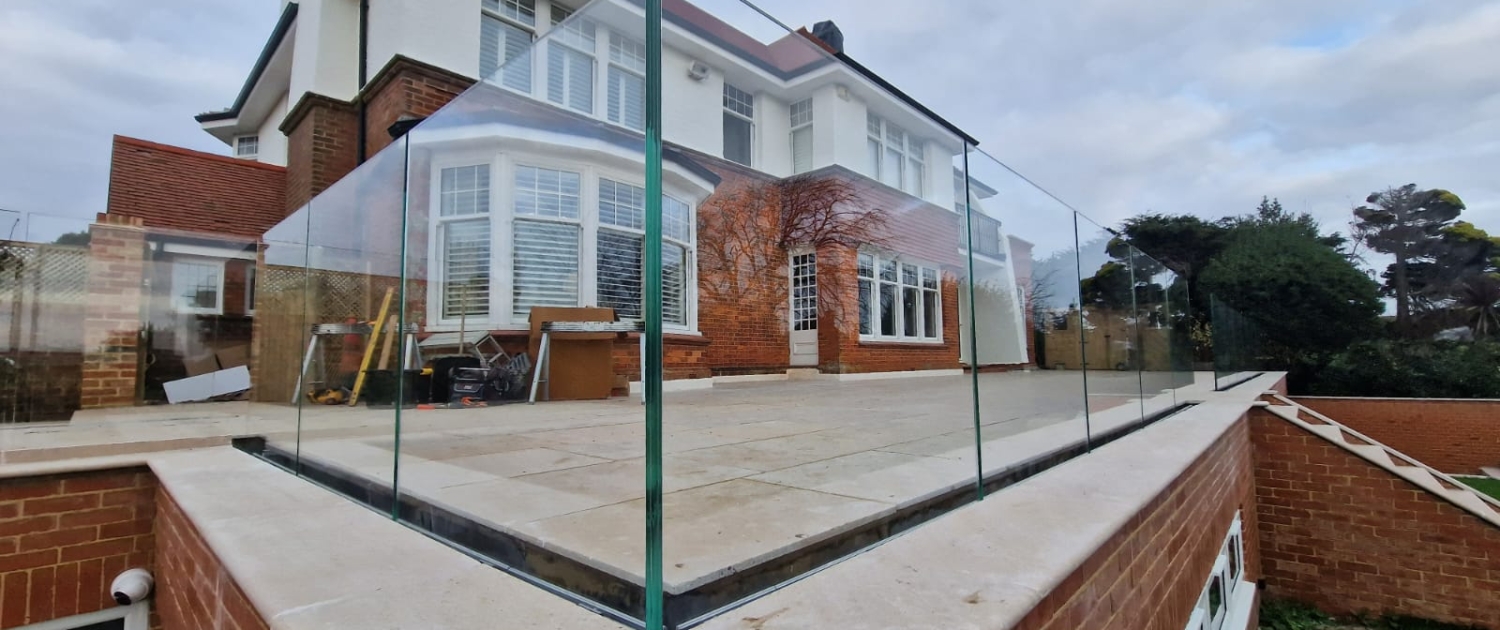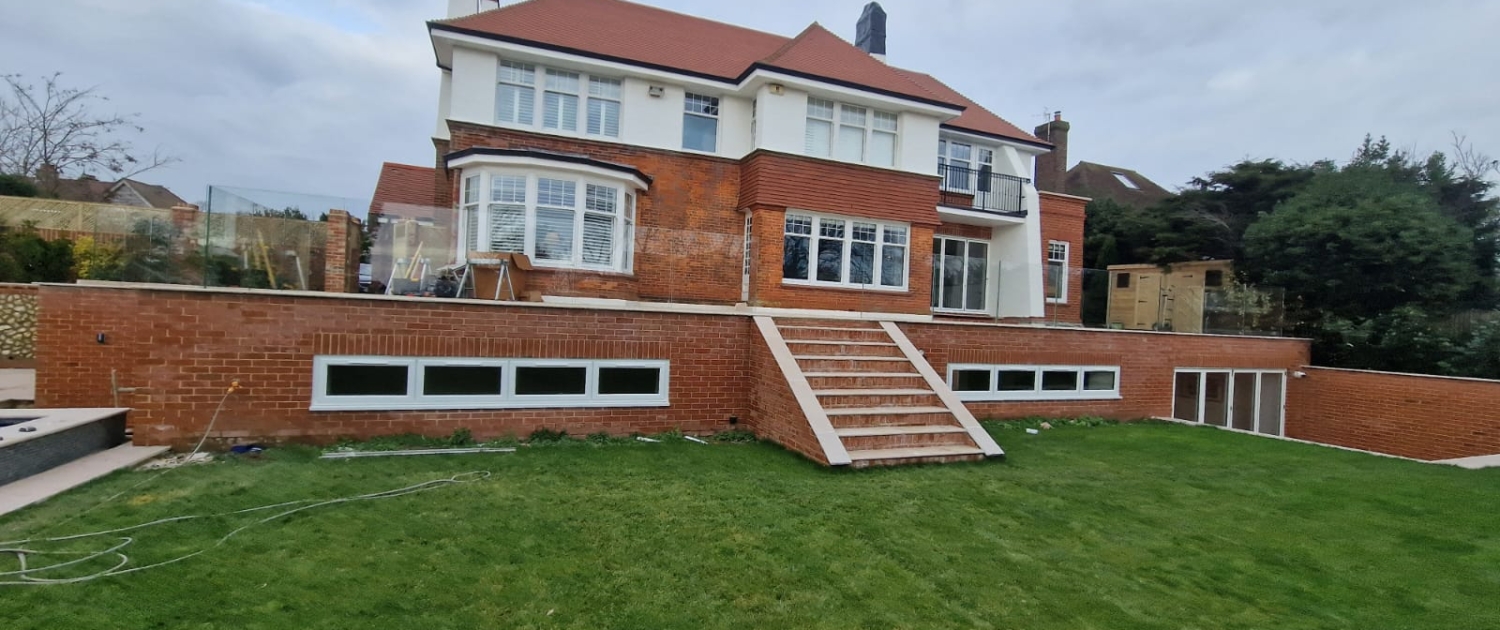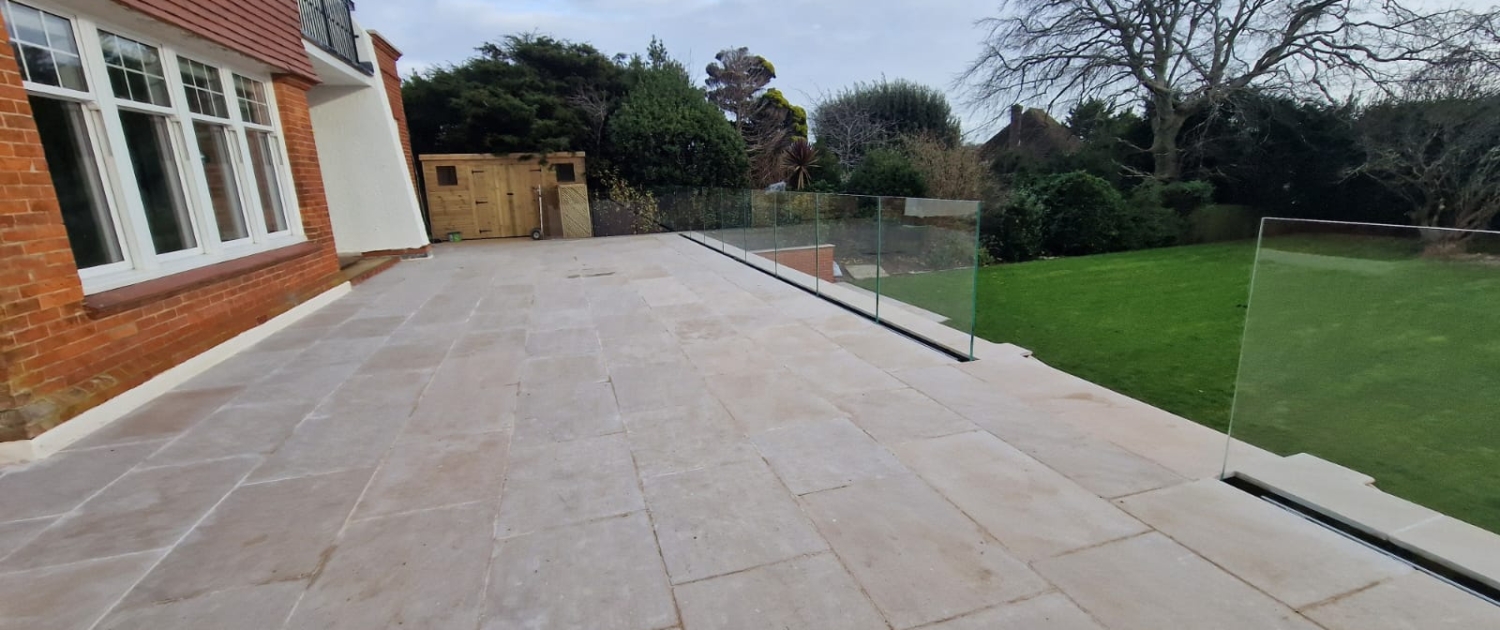In this article we will look to help you with the pros and cons between standard glass and low iron glass.
Both types of glass have their unique attributes and applications, making it essential to understand their differences to make a decision.
Standard Glass
Standard glass, also known as float glass, is a common material used in a variety of construction projects, including glass balustrades.
It’s manufactured by floating molten glass on a bed of molten metal, typically tin. This process results in a high-quality, flat surface.
As standard glass is more common, there are a few benefits around cost and availability.
Advantages of Standard Glass
- Cost-Effective: Standard glass is generally less expensive than low-iron glass. This makes it a budget-friendly option
- Availability: It is widely available and comes in a variety of thicknesses and sizes, making it a versatile choice for different design needs.
- Durability: Like low iron glass, standard glass is also toughened or laminated for use in balustrades, ensuring safety and durability.
Disadvantages of Standard Glass
- Greenish Tint: One of the most notable drawbacks of standard glass is its slight greenish tint. This is due to the iron content in the glass, which can affect the clarity and colour perception, especially noticeable in thicker pieces.
- Colour Distortion: For projects where colour and clarity are paramount, standard glass might not be the ideal choice, as it can slightly distort the true colour of objects seen through it.
Low Iron Glass
Low iron glass, often marketed as extra-clear or sapphire glass, is manufactured with a lower iron content compared to standard glass. This reduction in iron content significantly enhances its clarity.
Advantages of Low Iron Glass
- High Clarity: The most significant advantage of low iron glass is its high level of transparency. It lacks the greenish tint present in standard glass, making it ideal for applications where clear visibility is desired.
- Aesthetics: For projects aiming for a high-end, modern look, the crystal-clear appearance of low iron glass is often preferred. It enhances the true colours of the environment and the objects behind it.
- Versatility in Design: This type of glass is particularly favoured for interior designs, showrooms, and places where colour accuracy and aesthetic appeal are crucial.
Disadvantages of Low Iron Glass
- Cost: The main drawback of low iron glass is its cost. It is more expensive than standard glass due to its specialized manufacturing process.
- Availability: While its popularity is growing, low-iron glass may not be as readily available as standard glass, which could impact project timelines.
Want to know more about low-iron glass? visit Pilkington Optiwhite to learn more
Conclusion
Choosing between standard glass and low iron glass for a glass balustrade project essentially boils down to two main factors: budget and aesthetic preference.
If cost is a major concern and slight colour distortion is not an issue, standard glass is a practical choice.
However, if the project demands high clarity and colour accuracy, and budget is less of a constraint, low-iron glass is undoubtedly the superior option.
Ultimately, the decision should align with the specific requirements of the project, taking into consideration the overall design, location, and desired visual impact of the glass balustrade.
We hope the above article helps you in making your decision but if you still have questions, please feel free to get in touch.




